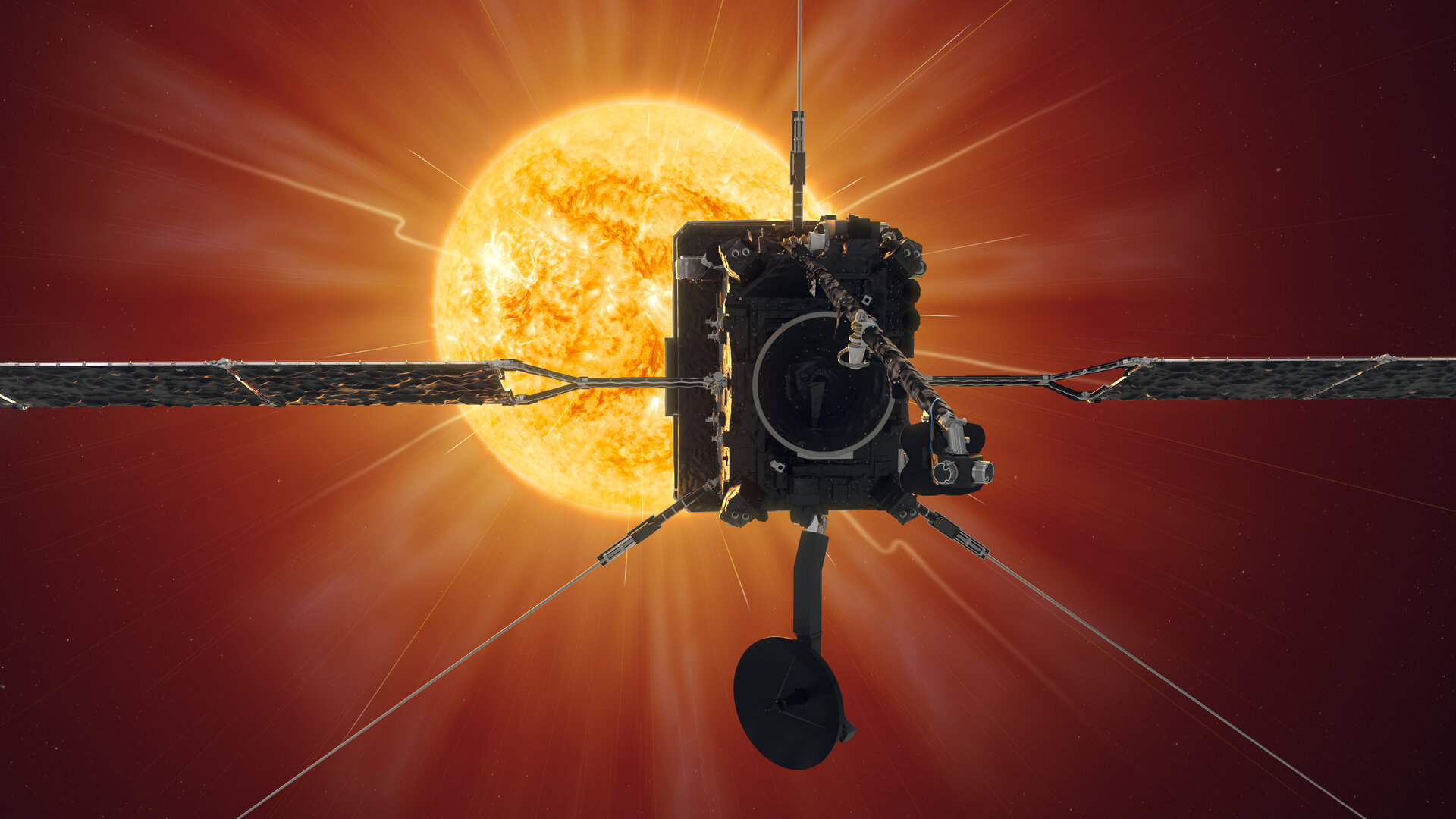Solar Orbiter spacecraft makes its 1st flyby of the sun

Solar Orbiter, a joint mission by NASA and the European Space Agency, has hit its first big milestone of its sun-watching mission — and the spacecraft will soon have pictures to prove it.
The probe is designed to give scientists a view of our sun unlike any they've ever seen before. That's because Solar Orbiter carries technology to gather images of our star, and its trajectory will allow it to study the poles of the sun, which never align toward Earth. And the science starts now, with the spacecraft executing its first flyby of the sun, or perihelion, today (June 15). The orbital maneuver brought the probe to about half the distance between the Earth and the sun, or about 48 million miles (77 million kilometers).
"We have never taken pictures of the sun from a closer distance than this," Daniel Müller, ESA's Solar Orbiter project scientist, said in a statement.
Related: Our sun will never look the same thanks to 2 probes & a giant telescope
According to the statement, the spacecraft's first imaging campaign will occur in the week following this close approach, or perihelion. It will take the spacecraft another week to beam those images back to Earth given its current distance from home, and the mission team expects to publish the resulting images in mid-July.
(NASA's Parker Solar Probe is already flying several times closer to the sun than Solar Orbiter is, but that spacecraft is not equipped to photograph the sun; instead it observes its immediate surroundings.)
Solar Orbiter launched in February and carries a total of 10 instruments: six telescopes and four instruments designed to study the spacecraft's immediate surroundings. Mission team members have been powering up and checking each instrument since shortly after the spacecraft's launch, but this week's data-gathering will be a new test for the probe.
Get the Space.com Newsletter
Breaking space news, the latest updates on rocket launches, skywatching events and more!
"For the first time, we will be able to put together the images from all our telescopes and see how they take complementary data of the various parts of the sun, including the surface, the outer atmosphere, or corona, and the wider heliosphere around it," Müller said.
And although scientists are excited for these images, the spacecraft hasn't yet begun its main science work. It will complete another perihelion early next year; the first perihelion of its main science campaign will occur in early 2022.
- The Solar Orbiter up close: Inside the clean room with the next sun probe (photos)
- See the new Solar Orbiter's 1st space measurements (and an awesome video)
- World's largest solar telescope produces never-before-seen image of our star
Email Meghan Bartels at mbartels@space.com or follow her @meghanbartels. Follow us on Twitter @Spacedotcom and on Facebook.
OFFER: Save 45% on 'All About Space' 'How it Works' and 'All About History'!
For a limited time, you can take out a digital subscription to any of our best-selling science magazines for just $2.38 per month, or 45% off the standard price for the first three months.
Join our Space Forums to keep talking space on the latest missions, night sky and more! And if you have a news tip, correction or comment, let us know at: community@space.com.

Meghan is a senior writer at Space.com and has more than five years' experience as a science journalist based in New York City. She joined Space.com in July 2018, with previous writing published in outlets including Newsweek and Audubon. Meghan earned an MA in science journalism from New York University and a BA in classics from Georgetown University, and in her free time she enjoys reading and visiting museums. Follow her on Twitter at @meghanbartels.










